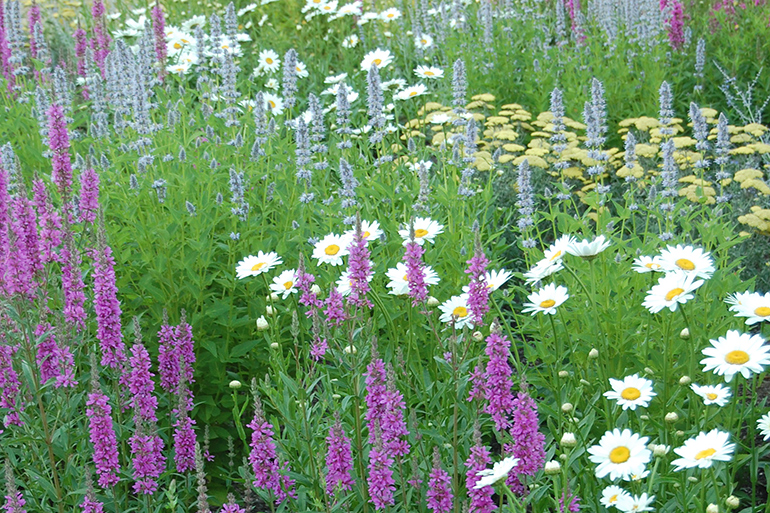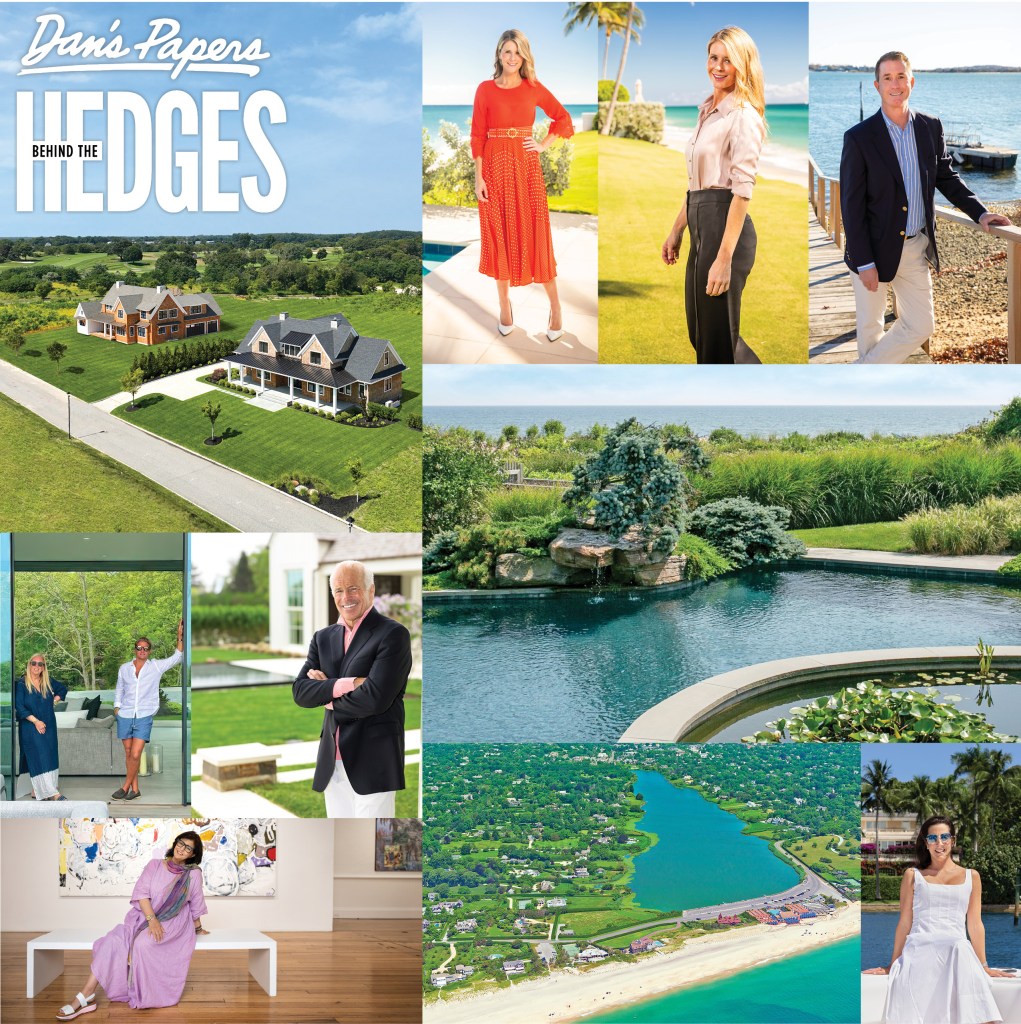Notes from the Garden: Create a Hamptons Wildlife Garden

The garden that best suits you will depend on your personal taste, sense of style and the kind of look you find most appealing. Wildlife gardens mimic what already exists in nature. A wildlife meadow will echo the natural landscape, helping to anchor your house by giving it a sense of place. Most wildlife gardens combine native with non-native plants from similar habitats in other parts of the country or even around the globe.
Being aware of your soil conditions and climate is a must; healthy soil is a basic tenet of any successful garden. Whether the site is sunny or located in an area of dry or damp shade, the soil can always be improved or enriched with compost and other nutrients as needed to create an excellent start for the plants. Organic matter encourages growth of beneficial organisms in soil that help plant roots find the necessary nutrients and convert soil nitrogen into forms the plants can use. Beginning with the soil is the most ecologically sound approach and one of the most conducive factors for long-term success because it is the foundation of the entire garden.
The wildlife garden should be a mass of color and fragrance, unleashing a full palette of color in a border by mixing flowers of different heights and shapes. Flowers should be placed in groups according to their height and color. The perfect placement will give depth to the design, allowing all plants to be noticed as a succession of blooms for color over a long time. Variety is also important to encourage natural life such as: birds, dragonflies, and butterflies. Be sure to include varying forms and textures: bushy, sprawling, and upright plants; round, spiky, fluffy, and trumpet-shaped flowers; bold, angular, feathery, fuzzy, and glossy leaves.
Monarch butterflies are back! Multiple generations of monarch butterflies come from Canada and the United States, traveling some 2,485 miles along the way to their warm winter quarters in the forest highlands of central Mexico. Plants such as Buddleia, Viburnum, Salvia, Hibiscus, Rudbeckia and Agastache will attract monarch butterflies and other colorful visitors.
The wildlife garden can be displayed as more structured or less, either way being flexible enough to fit into your overall landscaping. A structured garden can be large or small, but it has certain qualities regardless of size. Balance and symmetry, the way structural lines bring the eye to rest where they intersect, lend the garden a sense of stability and serenity. The main axis is intersected by a perpendicular axis that provides a precise pattern of space where the plants are situated. The presence of some evergreens such as Holly, Inkberry, and Boxwood will help balance out the design, while other design elements can include low-clipped hedges and simple color schemes.
In an unstructured design, plants are grouped into flowing drifts that sweep through the bed or border in a curve. The diagonals of unstructured gardens give them a more dynamic aspect as the eye follows the curve of a path until it disappears around the screen of shrubs. Unstructured gardens include such characteristics as curved beds, borders with undulating edges, and color schemes that combine both bright and soft tones. Ornamental grasses, Carex, and Roses can also be included in these gardens. While both design styles can be applied to create a wildlife garden, it is important to remember that the design must still look tailored even in a less structured approach, where the plant material, shape of the beds, colors, and heights all blend together with harmony.
For added visual impact, use different textured materials for paths like pavers, gravel, or pine needles. Consider introducing elements such as sculpture or urns to catch the eye. Nestled in the center of a flowering garden, sculpture delights the eye. The architectural artifact gives this planting scheme a focal point while the garden easily handles an ornament of oversize proportion. Adding sound with wind sculpture or sound fences will stimulate the senses even more. Sound fences are rows of tubes that create a melody when a stick is dragged across them. For a calming natural soundscape, trees like Weeping Birch and ornamental grasses offer the sound of their leaves rustling in the breeze.
Heighten your enjoyment of garden views and vistas by strategically placing comfortable seating in the garden. Fresh paint and new cushions easily breathe new life into classic, vintage and retro-style outdoor seating.
A wildlife garden can be made a part of any landscape or be featured on its own as an alternative to a lawn. By combining plants that naturally grow together in the wild, the wildlife garden will look appropriate and appealing.
Landscape designer, writer and lecturer Frederico Azevedo is the Founder of Unlimited Earth Care, Inc., providing high-quality landscape design and maintenance to the Hamptons, celebrating art in landscape since 1993. For more information call 631-725-7551 or visit unlimitedearthcare.com.



